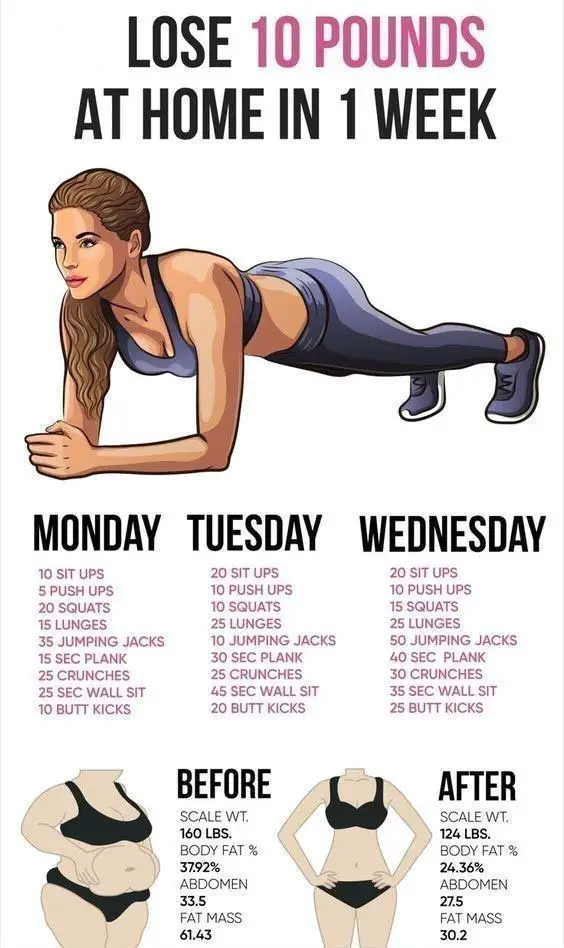Reduce visceral fat in 3 simple steps: 1) Incorporate strength training and HIIT workouts into your exercise routine to burn fat. 2) Increase your intake of protein and soluble fiber while cutting down on sugar.
3) Focus on getting eight hours of sleep per night and starting your day with exercise. These simple steps can help you reduce visceral fat and improve your overall health. Struggling with visceral fat can be frustrating and detrimental to your overall health.
Fortunately, there are simple steps you can take to reduce visceral fat and improve your overall well-being. We will explore three effective strategies for reducing visceral fat. By incorporating strength training, making healthy dietary choices, and adopting a well-rounded lifestyle, you can effectively shed excess visceral fat and achieve a healthier body. So, let’s dive in and discover how you can reduce visceral fat in just three simple steps.
Understanding Visceral Fat
Understanding visceral fat and how to reduce it in 3 simple steps can help improve overall health. By incorporating strength training, increasing soluble fiber intake, and cutting down on sugar, individuals can effectively target and minimize visceral fat, leading to a healthier and leaner body.
What Is Visceral Fat?
Visceral fat, also known as abdominal fat or belly fat, is a type of fat that accumulates around the organs in the abdominal cavity. Unlike subcutaneous fat, which is found just beneath the skin, visceral fat is deeper and surrounds vital organs like the liver, pancreas, and intestines.Why Is Visceral Fat Harmful?
Visceral fat may seem harmless, as it is not visible like subcutaneous fat. However, it is important to understand that excess visceral fat is linked to various health problems. Here are some reasons why visceral fat is harmful: 1. Increased Risk of Chronic Diseases: Excessive visceral fat is associated with an increased risk of developing chronic conditions like type 2 diabetes, heart disease, high blood pressure, and certain types of cancer. 2. Negative Impact on Organ Function: The presence of visceral fat in close proximity to vital organs can disrupt their normal functioning. It can lead to insulin resistance, fatty liver disease, inflammation, and hormonal imbalances. 3. Inflammation and Oxidative Stress: Visceral fat releases chemicals called cytokines and other inflammatory substances. These substances can contribute to chronic low-grade inflammation, which is a key factor in the development of various diseases. 4. Hormonal Imbalances: Visceral fat can disrupt the balance of hormones in the body, including insulin, leptin, and adiponectin. This can further contribute to weight gain, insulin resistance, and other metabolic disorders. Now that we have a better understanding of visceral fat and its harmful effects on our health, let’s explore how to reduce it in just three simple steps.
Credit: knottstdermatology.com
The Best Ways To Reduce Visceral Fat
Visceral fat, also known as belly fat, can be harmful to your health. It is associated with an increased risk of heart disease, type 2 diabetes, and certain cancers. If you are looking to reduce visceral fat, there are three simple steps that you can follow to achieve your goals. By maintaining a healthy diet, engaging in regular exercise, and making lifestyle changes, you can effectively reduce your visceral fat levels and improve your overall well-being.
Maintain A Healthy Diet
One of the most important steps in reducing visceral fat is maintaining a healthy diet. Here are some dietary changes you can start implementing today:
- Eat more whole foods such as fruits, vegetables, and whole grains as they are rich in fiber and can help you feel fuller for longer.
- Include lean protein sources like chicken, fish, tofu, and beans in your meals to promote muscle growth and repair.
- Reduce your intake of refined carbohydrates, such as white bread, pasta, and sugary snacks, as they can cause spikes in blood sugar levels.
- Avoid foods high in trans fats, which are often found in processed snacks and fried foods, as they can increase inflammation and contribute to weight gain.
- Stay hydrated by drinking plenty of water throughout the day to support digestion and overall bodily functions.
Engage In Regular Exercise
Regular exercise is crucial for reducing visceral fat. Here are some exercises you can incorporate into your routine:
- Include aerobic exercises like running, swimming, or cycling to help burn calories and increase your heart rate.
- Engage in strength training exercises such as weightlifting or bodyweight exercises to build lean muscle mass, which can help boost your metabolism.
- Try high-intensity interval training (HIIT) workouts to maximize calorie burn and promote fat loss.
- Make physical activity a part of your daily routine by walking or taking the stairs instead of the elevator.
Make Lifestyle Changes
In addition to diet and exercise, making certain lifestyle changes can also contribute to reducing visceral fat. Here are some changes you can start implementing:
- Ensure you get enough sleep each night, aiming for at least 7-8 hours, as lack of sleep can disrupt hormonal balance and increase hunger.
- Manage stress levels through activities like meditation, deep breathing exercises, or engaging in hobbies you enjoy.
- Limit your alcohol consumption, as excessive drinking can contribute to weight gain and increase visceral fat levels.
- Stay consistent with your healthy habits and make them a long-term part of your lifestyle, rather than relying on short-term fixes.
By combining these three steps – maintaining a healthy diet, engaging in regular exercise, and making lifestyle changes – you can effectively reduce visceral fat and improve your overall health and well-being. Remember to consult with a healthcare professional or registered dietitian before making any significant changes to your diet or exercise routine.
Additional Tips For Reducing Visceral Fat
Reducing visceral fat is crucial for maintaining a healthy weight and preventing various health concerns. In addition to the three simple steps mentioned earlier, there are some additional tips you can follow to further reduce visceral fat. Incorporating these tips into your lifestyle can make a significant difference in managing visceral fat levels. Let’s take a look at these tips:
1. Limit Refined Carbohydrates And Added Sugars
Refined carbohydrates and added sugars are major contributors to excess visceral fat. These include foods such as white bread, pasta, pastries, sugary drinks, and processed snacks. By limiting your intake of these foods, you can help decrease visceral fat accumulation and improve overall health.
2. Increase Fiber Intake
Fiber-rich foods not only aid in digestion but also play a crucial role in reducing visceral fat. High-fiber foods help promote feelings of fullness, control cravings, and regulate blood sugar levels. Including foods like fruits, vegetables, whole grains, and legumes in your diet can boost fiber intake and contribute to a healthier weight.
3. Get Sufficient Sleep
Sleep is often underestimated when it comes to weight management and reducing visceral fat. Lack of sleep can disrupt hormones related to metabolism and appetite, leading to weight gain and increased visceral fat. Aim for at least seven to eight hours of quality sleep every night to support overall health and reduce visceral fat.
By incorporating these additional tips into your lifestyle, you can enhance the effectiveness of your efforts to reduce visceral fat. Remember, consistency and commitment are key when it comes to achieving and maintaining a healthy weight.

Credit: www.stylecraze.com

Credit: www.pritikin.com
Frequently Asked Questions On How To Reduce Visceral Fat In 3 Simple Steps
What Is The Fastest Way To Get Rid Of Visceral Fat?
The fastest way to get rid of visceral fat is by losing weight and maintaining a healthy diet. This can be achieved through strength training, increasing protein intake, getting enough sleep, consuming soluble fiber, doing HIIT workouts, reducing sugar intake, exercising in the morning, and eating slowly.
Additionally, incorporating foods rich in calcium and vitamin D, such as leafy greens, tofu, sardines, yogurt, cheese, and milk, may help reduce visceral fat.
What Burns The Most Visceral Fat?
To burn the most visceral fat, engage in strength training, increase your protein intake, get enough sleep, consume soluble fiber, incorporate HIIT workouts, reduce sugar intake, exercise in the morning, and eat slowly. Additionally, including calcium and vitamin D-rich foods such as leafy greens, tofu, and dairy products can help reduce visceral fat.
Avoid trans fats in your diet as they are linked to carrying more visceral fat.
What Are 3 Simple Fat Burning Strategies?
Here are 3 simple fat burning strategies: 1. Engage in strength training workouts 2. Increase protein intake and include soluble fiber in your diet 3. Cut down on sugar and start your day with exercise.
What Eats Visceral Fat?
To reduce visceral fat, focus on losing weight through a healthy diet and exercise. Increase calcium and vitamin D intake with leafy greens, tofu, sardines, dairy products. Avoid trans fats found in processed foods. Proper sleep, strength training, and high-intensity interval workouts can also help.
Conclusion
To reduce visceral fat, follow these three simple steps: prioritize strength training and HIIT workouts to burn fat, increase your soluble fiber intake, and cut down on sugar. Additionally, incorporating more calcium and vitamin D-rich foods like leafy greens, tofu, and dairy can help reduce visceral fat.
Remember to maintain a healthy balanced diet and stay physically active to prevent visceral fat from occurring. Taking these steps will set you on the path to a healthier, leaner body.

